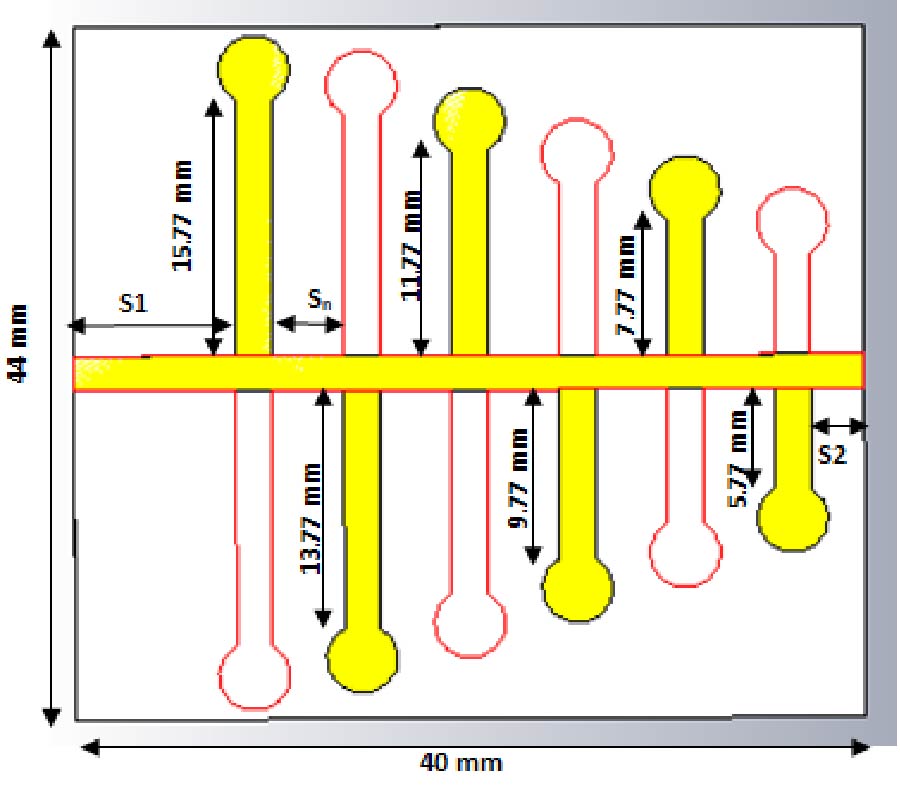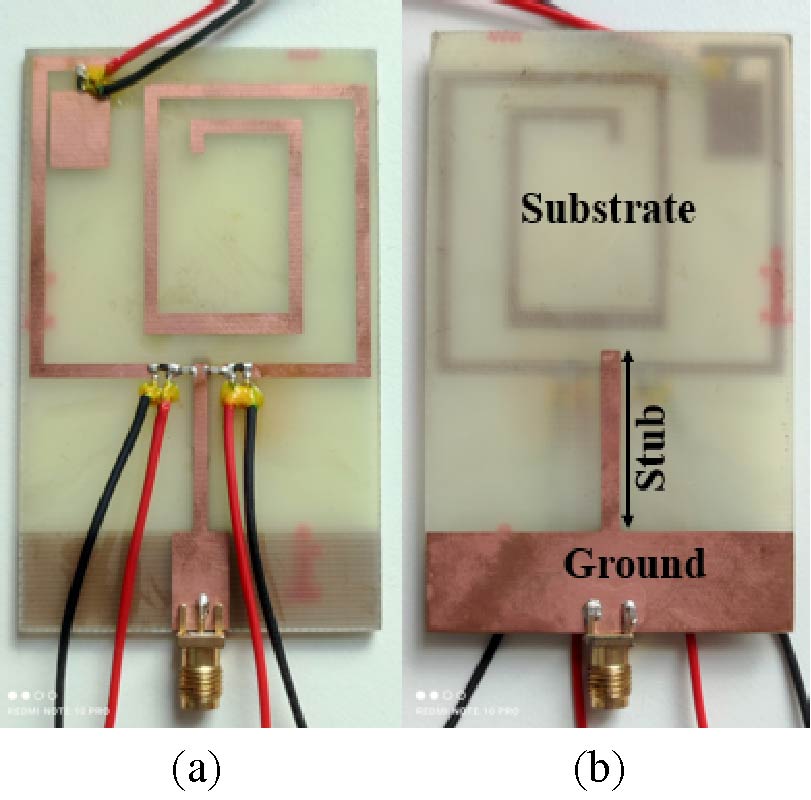A Compact Reconfigurable Multi-Frequency Patch Antenna for LoRa IoT Applications
Muhammad Sani Yahya,
Socheatra Soeung,
Francis Emmanuel Chinda,
Sharul Kamal Bin Abd Rahim,
Umar Musa,
Nursyarizal B. M. Nor and
Sovuthy Cheab
In this study, a compact, reconfigurable, and high-efficiency Long Range (LoRa) patch antenna, which is novel, is presented for Internet of Things (IoT) applications. The antenna is designed to operate at the three major frequencies used for LoRa communication, namely 915 MHz, 868 MHz, and 433 MHz, which are widely employed for global LoRa connectivity. The compact size and impedance matching of the antenna are achieved through the use of meandered radiating patches, a partial ground plane, and a ground plane stub. The antenna is prototyped on a commercially available and cost-effective FR-4 material and measures 80 mm x 50 mm x 1.6 mm (0.12λ x 0.07λ at the lowest resonant frequency), which is smaller than the size of a standard credit card. The antenna utilizes three RF PIN diodes (SW1, SW2, and SW3) for frequency reconfiguration, which are characterized by low insertion loss and fast switching time. The RLC equivalent circuit of the antenna was validated through simulations and measurements, yielding the peak gain and radiation efficiency of 2.1 dBi and >90%, respectively. These results prove that the antenna is a promising solution for LoRa IoT applications in terms of size, cost, and performance, filling a gap in the existing literature of LoRa MPAs that are typically large, non-reconfigurable, low-gain, and single-band.














